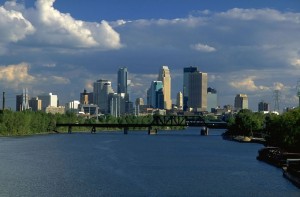Source: BUILDER Online
Publication date: 2011-09-16
By Boyce Thompson
 What can you say about the fickle economic forces that drive the home building industry? Markets that were among the healthiest six months ago have lost favor, due to weakness in the oil and gas sector of the economy. They’ve been replaced in some cases by unexpected markets that have worked through job losses and foreclosures to reach a much brighter place.
What can you say about the fickle economic forces that drive the home building industry? Markets that were among the healthiest six months ago have lost favor, due to weakness in the oil and gas sector of the economy. They’ve been replaced in some cases by unexpected markets that have worked through job losses and foreclosures to reach a much brighter place.
Twice annually, Builder works with Hanley Wood Market Intelligence to compile a list of the healthiest housing markets in the United States, based on forward projections for the metrics that drive housing production–jobs, price appreciation, population growth, and income growth. The projections come from Moody’s Economy.com.
Earlier this year, markets in Texas and the Carolinas dominated the list looking at 2011 market-level forecasts, thanks to growth in the oil economy in the case of Texas, and strong population growth in the case of the Carolinas. Both regions also had on their side a recovery in home prices as they worked through foreclosure issues.
Economic conditions in the oil patch aren’t quite as favorable today. And some bloom has come off the rose in the Carolinas, where home prices in some markets have double-dipped. As a result, our forward-looking view of the 20 healthiest markets is a little different today.
A lot has happened in the housing market since we last compiled this list in February. We had a double-dip in home prices. Only a small improvement in employment occurred on a national basis. And the long-vaunted housing recovery, which most housing economists pegged for late this year, hasn’t materialized.
Rising home prices, job gains, and improvement in median incomes will drive the healthiest markets over the next year and a half. Moody’s projects that permit activity may double in some of the very hottest of these markets, as the long-awaited housing recovery takes hold.
Markets that benefit from military spending, or major universities, once again crowd the top of our list. Some markets hit the trifecta with military bases, big universities, and strong private sector employment. But several of the state capitals that appeared on previous versions of the list have dropped to the bottom due to fiscal problems that resulted in layoffs.
Here, without further ado, are the 20 healthiest housing markets based on forecasts through 2012. Though permits weren’t used to produce the market health calculations, we’ve included forecasts for total housing permits in 2011 and 2012 to give you a sense of how big the market is and how much it’s expected to grow over the next 18 months.
(Editor’s note, for a list of all 20 healthiest housing markets please click on the link to read the full article)
 1: Minneapolis-St. Paul-Bloomington Minn.-Wisc.
1: Minneapolis-St. Paul-Bloomington Minn.-Wisc.
Health Index: 91.6
2011 Population Forecast: 3,326,400
2011 Total Building Permit Forecast: 4,511
2012 Total Building Permit Forecast: 10,118
If home prices are an indicator of market health–and some would say they are the best indicator–then Minneapolis is very healthy indeed. Home prices are expected to rise 8% next year, the highest rate among the 100 largest housing markets, and a big reason that Minneapolis finishes atop our healthy markets list.
A major hub for medical technology and the headquarters for many large corporations, Minneapolis appears poised for a big rebound in housing. One reason is that employment is forecasted to grow 2.5% next year. Building permit activity fell 21% in the first half of 2011, but it’s expected to more than double in 2012.
One negative in the market is that home prices plunged during the first half of 2011. Median home prices, $147,300 after the first half of the year, are down from $229,200 in 2006, a 36% drop that is close to the national average. Home prices have fallen 13% this year due to an increase in foreclosure sales. But Hanley Wood Market Intelligence expects prices to rebound next year.
The apartment market has been particularly strong in Minneapolis. As vacancy rates fell from 5% to 2.4%, developers started new projects, many aimed at a growing millennial (18-to-30 years old) population. Vacant units are reportedly hard to find in downtown Minneapolis and St. Paul.
